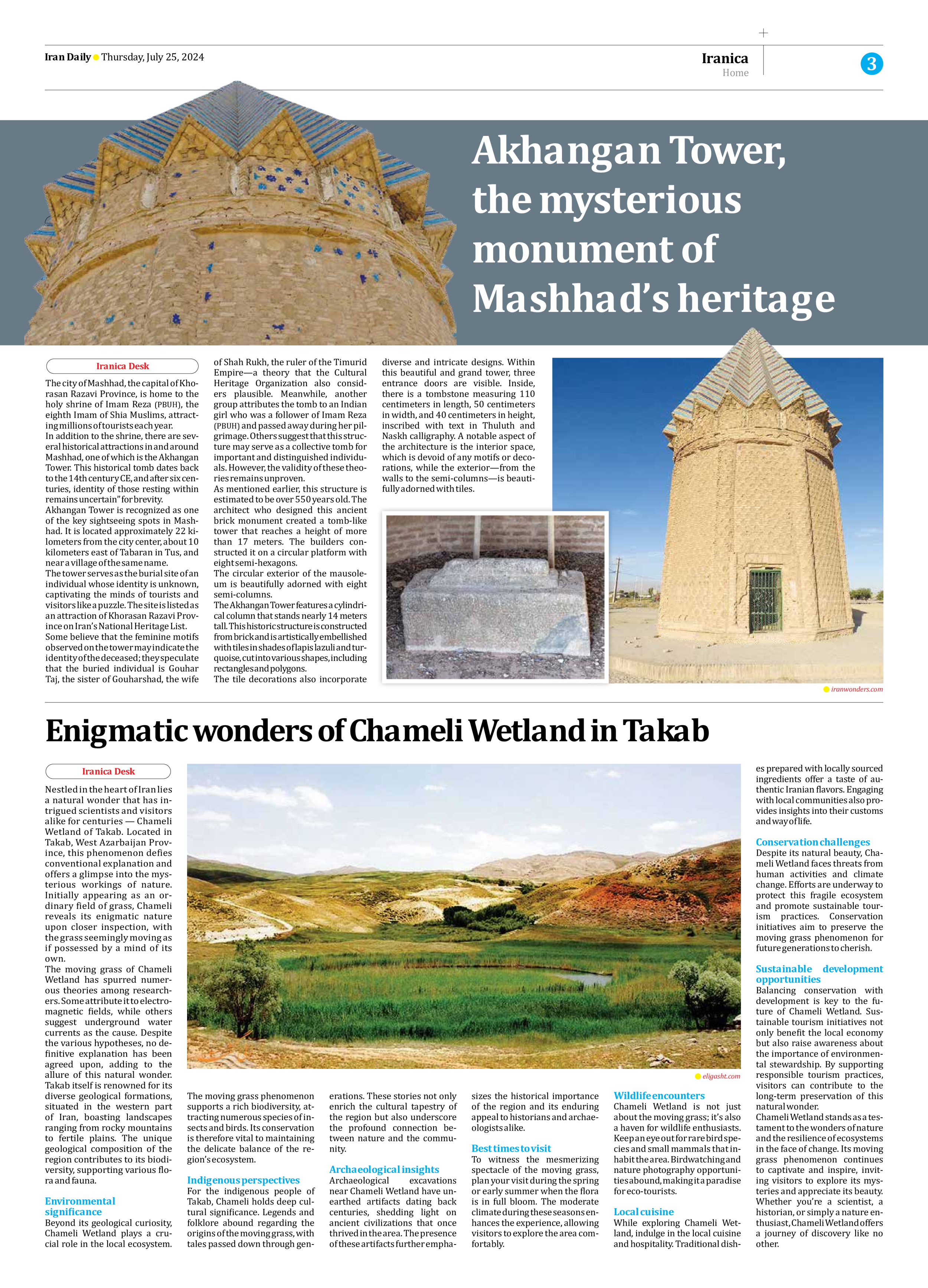
Akhangan Tower, the mysterious monument of Mashhad’s heritage
The city of Mashhad, the capital of Khorasan Razavi Province, is home to the holy shrine of Imam Reza (PBUH), the eighth Imam of Shia Muslims, attracting millions of tourists each year.
In addition to the shrine, there are several historical attractions in and around Mashhad, one of which is the Akhangan Tower. This historical tomb dates back to the 14th century CE, and after six centuries, identity of those resting within remains uncertain” for brevity.
Akhangan Tower is recognized as one of the key sightseeing spots in Mashhad. It is located approximately 22 kilometers from the city center, about 10 kilometers east of Tabaran in Tus, and near a village of the same name.
The tower serves as the burial site of an individual whose identity is unknown, captivating the minds of tourists and visitors like a puzzle. The site is listed as an attraction of Khorasan Razavi Province on Iran’s National Heritage List.
Some believe that the feminine motifs observed on the tower may indicate the identity of the deceased; they speculate that the buried individual is Gouhar Taj, the sister of Gouharshad, the wife of Shah Rukh, the ruler of the Timurid Empire—a theory that the Cultural Heritage Organization also considers plausible. Meanwhile, another group attributes the tomb to an Indian girl who was a follower of Imam Reza (PBUH) and passed away during her pilgrimage. Others suggest that this structure may serve as a collective tomb for important and distinguished individuals. However, the validity of these theories remains unproven.
As mentioned earlier, this structure is estimated to be over 550 years old. The architect who designed this ancient brick monument created a tomb-like tower that reaches a height of more than 17 meters. The builders constructed it on a circular platform with eight semi-hexagons.
The circular exterior of the mausoleum is beautifully adorned with eight semi-columns.
The Akhangan Tower features a cylindrical column that stands nearly 14 meters tall. This historic structure is constructed from brick and is artistically embellished with tiles in shades of lapis lazuli and turquoise, cut into various shapes, including rectangles and polygons.
The tile decorations also incorporate diverse and intricate designs. Within this beautiful and grand tower, three entrance doors are visible. Inside, there is a tombstone measuring 110 centimeters in length, 50 centimeters in width, and 40 centimeters in height, inscribed with text in Thuluth and Naskh calligraphy. A notable aspect of the architecture is the interior space, which is devoid of any motifs or decorations, while the exterior—from the walls to the semi-columns—is beautifully adorned with tiles.







